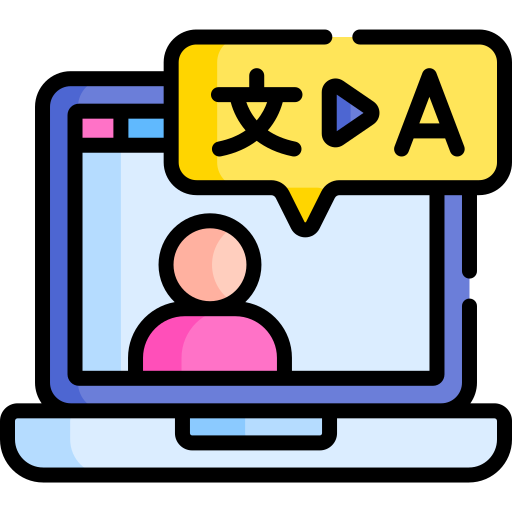Get real world experience with live projects
HR Essential/Operations Program
- Tenure - 28+ Hours, Live Training
- Upcoming class - Starting from 17 May 2025 | 7 - 9 PM
- Next batch - Coming Soon
- Program Fee: 6500 INR
Reserve your seat for May batch, Only 11 Slots Left!
Guaranteed Interview Calls
Don't have time for regular live courses? Explore our recorded courses and learn at your own pace.
Who is this program for
This Program would be beneficial for team members in HR, Compliance, Admin, Legal and Executives managing HR Essentials and Employee related matters.
- Education
Any graduate
- Work Exp.
Min 6 months
- Career Stage
Early, Mid or Advance all can do
- Aspirations
Achieving higher career growth in HR Essentials and Employee related matters.
Explore our Syllabus
What you will learn: By the end of the course, participants should have a comprehensive understanding of payroll management, statutory compliance, and the skills needed to effectively navigate the challenges associated with these areas in a professional setting. Practical exercises, case studies, and real-world examples may be integrated to enhance the learning experience.
- Overview of HR Management
- Definition and importance
- Key functions and responsibilities of HR
- Role of an HR Generalist
- Understanding the HR generalist role
- Skills and competencies required
- HR Department Structure
- Organizational structure of HR departments
- Collaboration with other departments
- Overview of Talent Acquisition
-
-
- Definition and importance
- Difference between talent acquisition and recruitment
-
- Role of a Talent Acquisition Specialist
-
- Key responsibilities and competencies
- Skills required for success
- Understanding Workforce Planning
-
-
- Importance of workforce planning
- Steps in the workforce planning process
-
- Trends and Ratios in Workforce Planning
-
-
- Identifying current trends in the labor market
- Using ratios for effective workforce planning
-
- Developing Talent Acquisition Strategies
-
-
- Aligning talent acquisition with business goals
- Techniques to ensure strategic alignment
-
- Market and Competitor Analysis
-
- Conducting market research
- Analyzing competitor strategies
- Using data for competitive analysis
- Introduction to Sourcing
-
-
- Importance of sourcing in talent acquisition
- Overview of different sourcing methods
-
- Passive Sourcing
-
-
- Identifying and engaging passive candidates
- Techniques for building relationships with passive talent
-
- LinkedIn Sourcing
-
-
- Advanced search techniques on LinkedIn
- Using LinkedIn Recruiter and other tools
- Engaging with candidates on LinkedIn
-
- GitHub Sourcing
-
-
- Understanding GitHub as a platform
- Techniques for sourcing developers on GitHub
- Analyzing GitHub profiles and contributions
- GitHub chrome tools
- Github bulk scraping
-
- Custom Search Engines (CSE)
-
-
- Creating and using CSE for talent searches
- Popular CSE sites and how to use them
- Benefits and limitations of CSE
-
- Chrome Extensions and Tools
-
-
- Popular Chrome extensions for sourcing (e.g., LinkedIn Recruiter, Hunter, Lusha)
- How to install and use these tools effectively
-
- Web Scrapers
-
-
- Introduction to web scraping for sourcing
- Tools and techniques for web scraping (e.g., Octoparse, ParseHub)
- Ethical considerations in web scraping
-
- X-Ray Search Techniques
-
-
- Understanding X-Ray searches for social media and websites
- Performing X-Ray searches on LinkedIn, Twitter, Facebook, GitHub, and more
- Crafting effective X-Ray search strings
-
- Social Media Sourcing
-
- Utilizing LinkedIn, Twitter, Facebook, GitHub, and other platforms for sourcing
- Best practices for social media sourcing
- Engaging with potential candidates on social media
- Designing Recruitment Campaigns
-
-
- Creating compelling job ads
- Utilizing multimedia and content marketing
-
- Digital and Social Media Marketing
-
-
- Using social media for recruitment
- Search engine optimization (SEO) for job postings
- Techniques for effective SEO in recruitment
-
- Candidate Engagement
-
- Engaging passive candidates
- Building relationships with potential candidates
- Screening and Shortlisting
-
-
- Resume screening techniques
- Using applicant tracking systems (ATS)
-
- Interviewing Techniques
-
-
- Structured and unstructured interviews
- Behavioral and competency-based interviewing
-
- Assessment and Testing
-
- Pre-employment assessments and tests
- Evaluating candidate skills and fit
- Importance of Candidate Experience
-
-
- Impact on employer brand
- Enhancing the candidate journey
-
- Communication and Feedback
-
-
- Best practices for candidate communication
- Providing constructive feedback
-
- Onboarding New Hires
-
- Designing an effective onboarding process
- Integration and engagement of new employees
- Understanding DEI
-
-
- Importance of diversity, equity, and inclusion
- Legal and ethical considerations
-
- Developing DEI Strategies
-
-
- Creating inclusive job descriptions
- Implementing unbiased recruitment practices
-
- Promoting an Inclusive Culture
-
- Strategies to foster an inclusive work environment
- Addressing unconscious bias and promoting awareness
- Key Metrics and KPIs
-
-
- Tracking and measuring recruitment performance
- Common talent acquisition metrics
-
- Using Data for Decision Making
-
-
- Leveraging analytics to improve recruitment strategies
- Predictive analytics in talent acquisition
-
- Reporting and Continuous Improvement
-
- Creating and presenting recruitment reports
- Using feedback for continuous improvement
- Recruitment Technologies
-
-
- Overview of applicant tracking systems (ATS)
- Utilizing HR software and tools
-
- Artificial Intelligence and Automation
-
-
- Role of AI in talent acquisition
- AI tools for sourcing, screening, and engagement (e.g., HireVue, Pymetrics, Eightfold.ai)
- Automating repetitive recruitment tasks
-
- Generative AI and ChatGPT
-
-
- Introduction to generative AI and its applications in recruitment
- Using ChatGPT for candidate engagement, sourcing, and screening
- Best practices for implementing generative AI in talent acquisition
-
- Social Media and Digital Tools
-
-
- Leveraging digital tools for recruitment
- Emerging technologies in talent acquisition
-
- Recruitment Dashboards
-
- Designing and using recruitment dashboards
- Key metrics to include in dashboards
- Tools for creating and managing dashboards (e.g., Tableau, Power BI)
- Drivers of Employee Engagement
- Job Satisfaction
- Understanding the role of job satisfaction in engagement
- Factors contributing to job satisfaction (work environment, job role, etc.)
- Leadership and Management
- The impact of leadership style on employee engagement
- Best practices for effective management and leadership
- Recognition and Rewards
- Importance of recognizing and rewarding employees
- Different types of recognition programs (monetary, non-monetary)
- Career Development
- Opportunities for growth and development as a driver of engagement
- Creating career development plans for employees
- Work-Life Balance
- The importance of work-life balance in maintaining engagement
- Implementing flexible work arrangements and policies
- Communication and Feedback
- Role of transparent and open communication
- Establishing regular feedback mechanisms
- Job Satisfaction
- Measuring and Improving Engagement
- Employee Engagement Surveys
- Designing and administering surveys to measure engagement
- Key questions to include in engagement surveys
- Focus Groups and Interviews
- Conducting focus groups and interviews to gather qualitative data
- Analyzing responses for actionable insights
- Engagement Metrics and Analytics
- Identifying key metrics to track engagement (e.g., employee NPS, turnover rates)
- Using analytics tools to interpret data and identify trends
- Action Planning
- Developing action plans based on survey results and feedback
- Implementing and tracking improvements
- Continuous Improvement
- Regularly updating engagement strategies based on feedback
- Ensuring ongoing monitoring and adjustment
- Employee Engagement Surveys
- Engagement Models
- The Aon Hewitt Engagement Model
- Engagement Drivers
- Employee value proposition, work environment, rewards and recognition, career opportunities
- Engagement Outcomes
- Say, Stay, Strive model: Employees speak positively about the organization, desire to remain, and put in extra effort
- Engagement Drivers
- The Gallup Q12 Model
- 12 Key Drivers of Engagement
- Includes factors such as having the right materials and equipment, feeling cared for by managers, and opportunities for growth
- 12 Key Drivers of Engagement
- The Zinger Model
- Ten Blocks of Engagement
- Building blocks such as community, meaningful work, and recognition
- Ten Blocks of Engagement
- The Aon Hewitt Engagement Model
- Types of Engagement Activities
- Downward Engagement
- Leadership Communication
- Regular updates from leadership on company goals and performance
- Town hall meetings, newsletters, and executive Q&A sessions
- Feedback Mechanisms
- Surveys, suggestion boxes, and direct feedback channels
- Leadership Communication
- Upward Engagement
- Employee Voice Programs
- Platforms for employees to share ideas and concerns
- Involving employees in decision-making processes
- Mentorship Programs
- Pairing employees with mentors to provide guidance and support
- Employee Voice Programs
- Horizontal Engagement
- Team Building Activities
- Activities that promote teamwork and collaboration
- Social events, team challenges, and group projects
- Cross-Functional Projects
- Encouraging collaboration between different departments
- Projects that require input and cooperation from various teams
- Team Building Activities
- Downward Engagement
- Retention Strategies
- Identifying Retention Risks
- Recognizing early signs of disengagement and turnover risk
- Using data and analytics to identify at-risk employees
- Developing Retention Programs
- Creating targeted retention programs for high-risk groups
- Strategies for increasing loyalty and reducing turnover
- Mentorship and Career Development
- Implementing mentorship programs to support employee growth
- Providing clear career progression paths
- Identifying Retention Risks
- Employee Value Proposition (EVP)
- Creating a Compelling EVP
- Defining the key elements of an EVP
- Aligning the EVP with organizational values and culture
- Communicating and Promoting EVP
- Effectively communicating the EVP to current and prospective employees
- Using EVP in recruitment marketing and employer branding
- Measuring the Impact of EVP
- Assessing the effectiveness of the EVP in attracting and retaining talent
- Continuously refining the EVP based on feedback and results
- Creating a Compelling EVP
- Pre-Onboarding Preparation
- Paperwork and Documentation
- Collecting necessary documents (e.g., ID proof, employment contracts, tax forms)
- Setting up employee profiles in HR systems
- Welcome Kit
- Preparing a welcome kit (company handbook, benefits information, company swag)
- Providing necessary equipment and access credentials (e.g., laptop, email accounts)
- Paperwork and Documentation
- Day One Orientation
- Introduction to the Company
- Company history, mission, values, and culture
- Overview of organizational structure and key personnel
- Workplace Tour
- Familiarizing new hires with the office layout, facilities, and amenities
- Meeting the Team
- Introducing new hires to their colleagues and managers
- Conducting team-building activities to facilitate integration
- Introduction to the Company
- Training and Development
- Initial Training Sessions
- Job-specific training and role expectations
- Overview of tools and systems used
- Compliance and Safety Training
- Mandatory compliance training (e.g., data protection, workplace safety)
- Company policies and procedures
- Buddy System
- Assigning a mentor or buddy to new hires for support and guidance
- Regular check-ins and feedback sessions with the buddy
- Initial Training Sessions
- 30-60-90 Day Plan with SMART Goals
- 30-Day Plan
- Orientation and Learning
- Learning about the company, culture, and job responsibilities
- Setting short-term goals for initial learning and adaptation
- SMART Goals
- Specific: Complete all mandatory training sessions
- Measurable: Attend and pass all compliance tests
- Achievable: Schedule one-on-one meetings with team members
- Relevant: Understand the company’s mission and values
- Time-bound: Achieve within the first 30 days
- Orientation and Learning
- 60-Day Plan
- Integration and Contribution
- Beginning to contribute to team projects and meetings
- Developing relationships with colleagues and stakeholders
- SMART Goals
- Specific: Participate in at least two team projects
- Measurable: Contribute to team meetings with actionable ideas
- Achievable: Schedule regular check-ins with the manager
- Relevant: Apply job-specific skills learned during training
- Time-bound: Achieve within the first 60 days
- Integration and Contribution
- 90-Day Plan
- Independence and Performance
- Taking full ownership of job responsibilities
- Demonstrating competence and achieving performance benchmarks
- SMART Goals
- Specific: Complete a major project or task independently
- Measurable: Meet or exceed performance benchmarks
- Achievable: Receive positive feedback from the manager
- Relevant: Contribute to achieving team objectives
- Time-bound: Achieve within the first 90 days
- Independence and Performance
- 30-Day Plan
- Ongoing Support
- Regular Check-ins
- Scheduling regular check-ins with managers and buddies
- Addressing any questions or concerns
- Continuous Feedback
- Providing continuous feedback on performance and progress
- Adjusting goals and expectations as needed
- Regular Check-ins
- Feedback and Evaluation
- Collecting Feedback
- Gathering feedback from new hires on their onboarding experience
- Evaluating Onboarding Effectiveness
- Measuring the success of the onboarding program
- Making improvements based on feedback
- Collecting Feedback
- Resignation and Termination Procedures
- Resignation Process
- Accepting resignations and processing paperwork
- Ensuring a smooth transition for the departing employee
- Termination Process
- Conducting terminations with sensitivity and legality
- Managing the administrative aspects of termination
- Resignation Process
- Exit Interviews
- Conducting Exit Interviews
- Scheduling and conducting exit interviews
- Asking relevant questions to gather meaningful feedback
- Analyzing Feedback
- Identifying patterns and trends in exit interview data
- Using feedback to improve organizational practices
- Conducting Exit Interviews
- Knowledge Transfer
- Ensuring Continuity
- Transferring knowledge and responsibilities to remaining team members
- Documenting key information and processes
- Succession Planning
- Implementing succession plans for critical roles
- Identifying and preparing potential successors
- Ensuring Continuity
- Final Settlements
- Processing Final Pay and Benefits
- Calculating and disbursing final paychecks
- Managing benefits termination and transition
- Returning Company Property
- Collecting company property (e.g., laptops, access cards)
- Ensuring all assets are returned
- Processing Final Pay and Benefits
- Post-Exit Follow-Up
- Maintaining Alumni Relations
- Keeping in touch with former employees
- Leveraging alumni networks for future opportunities
- Maintaining Alumni Relations
- Definition and Importance
- Understanding what constitutes a grievance
- Importance of effective grievance management
- Types of Grievances
- Common grievances in the workplace (e.g., discrimination, harassment, unfair treatment)
- Framework Overview
- Steps involved in the grievance management process
- Roles and responsibilities of HR and management
- Establishing a Grievance Policy
- Key components of an effective grievance policy
- Communicating the policy to employees
- Grievance Procedures
- Formal and informal grievance procedures
- Step-by-step process for handling grievances
- Step 1: Receiving a Grievance
- Methods for lodging a grievance (e.g., written, verbal)
- Initial response and acknowledgment
- Step 2: Investigation
- Conducting a thorough and unbiased investigation
- Collecting and documenting evidence
- Step 3: Resolution
- Evaluating findings and determining appropriate actions
- Communicating the resolution to the involved parties
- Step 4: Follow-Up
- Monitoring the situation post-resolution
- Ensuring no retaliation and checking for ongoing issues
- Role and Composition
- Purpose and importance of a grievance handling committee
- Selecting committee members (HR, management, employee representatives)
- Committee Responsibilities
- Reviewing grievances and ensuring fair investigation
- Making recommendations for resolution
- Committee Procedures
- Regular meetings and case review processes
- Ensuring confidentiality and impartiality
- Understanding Employment Laws
- Key employment laws relevant to grievance management (e.g., anti-discrimination laws, labor laws)
- Legal rights and protections for employees
- Compliance and Documentation
- Maintaining proper documentation for legal compliance
- Handling grievances in accordance with legal requirements
- Role of Legal Counsel
- When to involve legal counsel in the grievance process
- Understanding the implications of legal advice and decisions
- Building a Positive Workplace Culture
- Promoting open communication and trust
- Encouraging early resolution of issues
- Training and Development
- Providing training for managers and HR on handling grievances
- Developing skills for effective conflict resolution
- Continuous Improvement
- Regularly reviewing and updating grievance policies and procedures
- Gathering feedback to improve the grievance management process
- Analyzing Real-World Scenarios
- Examining case studies of grievance handling
- Lessons learned from successful and unsuccessful grievance resolutions
- Payroll Management Fundamentals
- HR planning, employee transfer, and increment process
- Income under the head salaries u/s 17(1) of Income Tax Act 1961
- Salary components: fixed and variable, bonus, fees, commission, overtime payments
- Payroll administration setup, CTC structure, taxable and non-taxable payments
- Employee Provident Fund (PF)
- Covered establishments, PF wages, contribution accounts, deposit dates
- Employee State Insurance (ESI)
- Covered establishments, wage limits, contribution rates, periods
- Professional Tax (PT)
- Applicability, state-wise slabs, calculator, payment, and registration
- Labor Welfare Fund (LWF)
- Applicability, state-wise rates, deposit procedures
- Statutory Bonus and Gratuity
- Applicability and computation
- Tax Deduction at Source (TDS)
- Income tax, slabs, and computation
- Deductions (u/s 80C – 80U)
- Various sections under Chapter VI-A of Income Tax Act, 1961
- LTA, HRA, leave encashment, and gratuity exemptions
- Deduction of interest on housing loan u/s 24(b)
- Taxable Salary Calculation
- Post exemptions and deductions
- Allowances under Section 10
- Section 10(13A) – House Rent Allowance (HRA)
- Calculation, salary definition, and tax implications
- Section 10(14) – Special Allowances
- Specific allowances like travel, uniform, and others, and their tax implications
- Section 10(13A) – House Rent Allowance (HRA)
- Perquisites and Their Tax Implications
- Types of Perquisites
- Company car, accommodation, and other perks
- Taxability and Valuation
- Methods of valuation and taxation of perquisites
- Types of Perquisites
- Fixed Salary Structure
- Components of a fixed salary structure
- Benefits and limitations
- Flexible Salary Structure
- Components of a flexible salary structure
- Advantages of a flexible salary package
- Payroll Processing Steps
- Gathering payroll inputs, setting up employee information in payroll systems
- Applying compliance rules and tax rates, calculation, and deductions
- Verification and payroll checking
- Claims and Reimbursement Management
- Expense bill submission, medical and travel reimbursements
- Attendance Management and Resignation
- Time management, leave management, full and final settlements
- Salary Register, Slips, Bank Transfers, MIS
- Overview of salary slips, registers, MIS reports, bank transfers
- HR Planning
- Understanding workforce requirements, planning for employee transfers, and managing increments
- Salary Components
- Differentiating between fixed and variable components, bonuses, fees, commissions, and overtime payments
- CTC Structure
- Understanding the concept of Cost to Company (CTC), structuring CTC, and distinguishing between taxable and non-taxable components
- PF and ESI
- Detailed understanding of Provident Fund and Employee State Insurance contributions, calculation, deposit timelines, and compliance
- Professional Tax and Labor Welfare Fund
- State-wise slabs and applicability, payment procedures, and registration processes
- TDS
- Understanding income tax slabs, computation of TDS, and implications
- Exemptions and Deductions
- Exploring various exemptions and deductions under Chapter VI-A of the Income Tax Act, including Sections 80C to 80U
- Detailed breakdown of HRA, LTA, leave encashment, and gratuity exemptions
- Section 10 Allowances
- Detailed calculations and tax implications of HRA and special allowances under Section 10(13A) and 10(14)
- Perquisites
- Comprehensive understanding of various perquisites, their valuation, and tax implications
- Salary Structures
- Detailed analysis of fixed and flexible salary structures, components, benefits, and limitations
- Designing a flexible salary package to meet organizational and employee needs
- Payroll Processing
- Step-by-step guide to payroll processing, from data collection to payroll checking and verification
- Claims and Reimbursement Management
- Managing medical and travel reimbursements, expense bill submissions, and processing
- Attendance Management and Resignation
- Effective time management and leave management practices, full and final settlement processes
- Reporting and Documentation
- Generating and maintaining salary registers, salary slips, MIS reports, and handling bank transfers
- Overview of HR Management
- Definition and importance
- Key functions and responsibilities of HR
- Role of an HR Generalist
- Understanding the HR generalist role
- Skills and competencies required
- HR Department Structure
- Organizational structure of HR departments
- Collaboration with other departments
Module a: Introduction to Talent Acquisition
Overview of Talent Acquisition
Definition and importance
Difference between talent acquisition and recruitment
Role of a Talent Acquisition Specialist
Key responsibilities and competencies
Skills required for success
Module b: Workforce Planning and Strategy
Understanding Workforce Planning
Importance of workforce planning
Steps in the workforce planning process
Trends and Ratios in Workforce Planning
Identifying current trends in the labor market
Using ratios for effective workforce planning
Developing Talent Acquisition Strategies
Aligning talent acquisition with business goals
Techniques to ensure strategic alignment
Market and Competitor Analysis
Conducting market research
Analyzing competitor strategies
Using data for competitive analysis
Module c: Detailed Sourcing Techniques
Introduction to Sourcing
Importance of sourcing in talent acquisition
Overview of different sourcing methods
Passive Sourcing
Identifying and engaging passive candidates
Techniques for building relationships with passive talent
LinkedIn Sourcing
Advanced search techniques on LinkedIn
Using LinkedIn Recruiter and other tools
Engaging with candidates on LinkedIn
GitHub Sourcing
Understanding GitHub as a platform
Techniques for sourcing developers on GitHub
Analyzing GitHub profiles and contributions
- GitHub chrome tools
- Github bulk scraping
Custom Search Engines (CSE)
Creating and using CSE for talent searches
Popular CSE sites and how to use them
Benefits and limitations of CSE
Chrome Extensions and Tools
Popular Chrome extensions for sourcing (e.g., LinkedIn Recruiter, Hunter, Lusha)
How to install and use these tools effectively
Web Scrapers
Introduction to web scraping for sourcing
Tools and techniques for web scraping (e.g., Octoparse, ParseHub)
Ethical considerations in web scraping
X-Ray Search Techniques
Understanding X-Ray searches for social media and websites
Performing X-Ray searches on LinkedIn, Twitter, Facebook, GitHub, and more
Crafting effective X-Ray search strings
Social Media Sourcing
Utilizing LinkedIn, Twitter, Facebook, GitHub, and other platforms for sourcing
Best practices for social media sourcing
Engaging with potential candidates on social media
Module d: Recruitment Marketing
Designing Recruitment Campaigns
Creating compelling job ads
Utilizing multimedia and content marketing
Digital and Social Media Marketing
Using social media for recruitment
Search engine optimization (SEO) for job postings
Techniques for effective SEO in recruitment
Candidate Engagement
Engaging passive candidates
Building relationships with potential candidates
Module e: Selection Process
Screening and Shortlisting
Resume screening techniques
Using applicant tracking systems (ATS)
Interviewing Techniques
Structured and unstructured interviews
Behavioral and competency-based interviewing
Assessment and Testing
Pre-employment assessments and tests
Evaluating candidate skills and fit
Module f: Candidate Experience
Importance of Candidate Experience
Impact on employer brand
Enhancing the candidate journey
Communication and Feedback
Best practices for candidate communication
Providing constructive feedback
Onboarding New Hires
Designing an effective onboarding process
Integration and engagement of new employees
Module g: Diversity and Inclusion in Talent Acquisition
Understanding DEI
Importance of diversity, equity, and inclusion
Legal and ethical considerations
Developing DEI Strategies
Creating inclusive job descriptions
Implementing unbiased recruitment practices
Promoting an Inclusive Culture
Strategies to foster an inclusive work environment
Addressing unconscious bias and promoting awareness
Module h: Metrics and Analytics in Talent Acquisition
Key Metrics and KPIs
Tracking and measuring recruitment performance
Common talent acquisition metrics
Using Data for Decision Making
Leveraging analytics to improve recruitment strategies
Predictive analytics in talent acquisition
Reporting and Continuous Improvement
Creating and presenting recruitment reports
Using feedback for continuous improvement
Module i: Technology and Talent Acquisition
Recruitment Technologies
Overview of applicant tracking systems (ATS)
Utilizing HR software and tools
Artificial Intelligence and Automation
Role of AI in talent acquisition
AI tools for sourcing, screening, and engagement (e.g., HireVue, Pymetrics, Eightfold.ai)
Automating repetitive recruitment tasks
Generative AI and ChatGPT
Introduction to generative AI and its applications in recruitment
Using ChatGPT for candidate engagement, sourcing, and screening
Best practices for implementing generative AI in talent acquisition
Social Media and Digital Tools
Leveraging digital tools for recruitment
Emerging technologies in talent acquisition
Recruitment Dashboards
Designing and using recruitment dashboards
Key metrics to include in dashboards
Tools for creating and managing dashboards (e.g., Tableau, Power BI)
Employee Engagement and Retention
- Drivers of Employee Engagement
- Job Satisfaction
- Understanding the role of job satisfaction in engagement
- Factors contributing to job satisfaction (work environment, job role, etc.)
- Leadership and Management
- The impact of leadership style on employee engagement
- Best practices for effective management and leadership
- Recognition and Rewards
- Importance of recognizing and rewarding employees
- Different types of recognition programs (monetary, non-monetary)
- Career Development
- Opportunities for growth and development as a driver of engagement
- Creating career development plans for employees
- Work-Life Balance
- The importance of work-life balance in maintaining engagement
- Implementing flexible work arrangements and policies
- Communication and Feedback
- Role of transparent and open communication
- Establishing regular feedback mechanisms
- Job Satisfaction
- Measuring and Improving Engagement
- Employee Engagement Surveys
- Designing and administering surveys to measure engagement
- Key questions to include in engagement surveys
- Focus Groups and Interviews
- Conducting focus groups and interviews to gather qualitative data
- Analyzing responses for actionable insights
- Engagement Metrics and Analytics
- Identifying key metrics to track engagement (e.g., employee NPS, turnover rates)
- Using analytics tools to interpret data and identify trends
- Action Planning
- Developing action plans based on survey results and feedback
- Implementing and tracking improvements
- Continuous Improvement
- Regularly updating engagement strategies based on feedback
- Ensuring ongoing monitoring and adjustment
- Employee Engagement Surveys
- Engagement Models
- The Aon Hewitt Engagement Model
- Engagement Drivers
- Employee value proposition, work environment, rewards and recognition, career opportunities
- Engagement Outcomes
- Say, Stay, Strive model: Employees speak positively about the organization, desire to remain, and put in extra effort
- Engagement Drivers
- The Gallup Q12 Model
- 12 Key Drivers of Engagement
- Includes factors such as having the right materials and equipment, feeling cared for by managers, and opportunities for growth
- 12 Key Drivers of Engagement
- The Zinger Model
- Ten Blocks of Engagement
- Building blocks such as community, meaningful work, and recognition
- Ten Blocks of Engagement
- The Aon Hewitt Engagement Model
- Types of Engagement Activities
- Downward Engagement
- Leadership Communication
- Regular updates from leadership on company goals and performance
- Town hall meetings, newsletters, and executive Q&A sessions
- Feedback Mechanisms
- Surveys, suggestion boxes, and direct feedback channels
- Leadership Communication
- Upward Engagement
- Employee Voice Programs
- Platforms for employees to share ideas and concerns
- Involving employees in decision-making processes
- Mentorship Programs
- Pairing employees with mentors to provide guidance and support
- Employee Voice Programs
- Horizontal Engagement
- Team Building Activities
- Activities that promote teamwork and collaboration
- Social events, team challenges, and group projects
- Cross-Functional Projects
- Encouraging collaboration between different departments
- Projects that require input and cooperation from various teams
- Team Building Activities
- Downward Engagement
- Retention Strategies
- Identifying Retention Risks
- Recognizing early signs of disengagement and turnover risk
- Using data and analytics to identify at-risk employees
- Developing Retention Programs
- Creating targeted retention programs for high-risk groups
- Strategies for increasing loyalty and reducing turnover
- Mentorship and Career Development
- Implementing mentorship programs to support employee growth
- Providing clear career progression paths
- Identifying Retention Risks
- Employee Value Proposition (EVP)
- Creating a Compelling EVP
- Defining the key elements of an EVP
- Aligning the EVP with organizational values and culture
- Communicating and Promoting EVP
- Effectively communicating the EVP to current and prospective employees
- Using EVP in recruitment marketing and employer branding
- Measuring the Impact of EVP
- Assessing the effectiveness of the EVP in attracting and retaining talent
- Continuously refining the EVP based on feedback and results
- Creating a Compelling EVP
Onboarding
Employee Onboarding Process
- Pre-Onboarding Preparation
- Paperwork and Documentation
- Collecting necessary documents (e.g., ID proof, employment contracts, tax forms)
- Setting up employee profiles in HR systems
- Welcome Kit
- Preparing a welcome kit (company handbook, benefits information, company swag)
- Providing necessary equipment and access credentials (e.g., laptop, email accounts)
- Paperwork and Documentation
- Day One Orientation
- Introduction to the Company
- Company history, mission, values, and culture
- Overview of organizational structure and key personnel
- Workplace Tour
- Familiarizing new hires with the office layout, facilities, and amenities
- Meeting the Team
- Introducing new hires to their colleagues and managers
- Conducting team-building activities to facilitate integration
- Introduction to the Company
- Training and Development
- Initial Training Sessions
- Job-specific training and role expectations
- Overview of tools and systems used
- Compliance and Safety Training
- Mandatory compliance training (e.g., data protection, workplace safety)
- Company policies and procedures
- Buddy System
- Assigning a mentor or buddy to new hires for support and guidance
- Regular check-ins and feedback sessions with the buddy
- Initial Training Sessions
- 30-60-90 Day Plan with SMART Goals
- 30-Day Plan
- Orientation and Learning
- Learning about the company, culture, and job responsibilities
- Setting short-term goals for initial learning and adaptation
- SMART Goals
- Specific: Complete all mandatory training sessions
- Measurable: Attend and pass all compliance tests
- Achievable: Schedule one-on-one meetings with team members
- Relevant: Understand the company’s mission and values
- Time-bound: Achieve within the first 30 days
- Orientation and Learning
- 60-Day Plan
- Integration and Contribution
- Beginning to contribute to team projects and meetings
- Developing relationships with colleagues and stakeholders
- SMART Goals
- Specific: Participate in at least two team projects
- Measurable: Contribute to team meetings with actionable ideas
- Achievable: Schedule regular check-ins with the manager
- Relevant: Apply job-specific skills learned during training
- Time-bound: Achieve within the first 60 days
- Integration and Contribution
- 90-Day Plan
- Independence and Performance
- Taking full ownership of job responsibilities
- Demonstrating competence and achieving performance benchmarks
- SMART Goals
- Specific: Complete a major project or task independently
- Measurable: Meet or exceed performance benchmarks
- Achievable: Receive positive feedback from the manager
- Relevant: Contribute to achieving team objectives
- Time-bound: Achieve within the first 90 days
- Independence and Performance
- 30-Day Plan
- Ongoing Support
- Regular Check-ins
- Scheduling regular check-ins with managers and buddies
- Addressing any questions or concerns
- Continuous Feedback
- Providing continuous feedback on performance and progress
- Adjusting goals and expectations as needed
- Regular Check-ins
- Feedback and Evaluation
- Collecting Feedback
- Gathering feedback from new hires on their onboarding experience
- Evaluating Onboarding Effectiveness
- Measuring the success of the onboarding program
- Making improvements based on feedback
- Collecting Feedback
Employee Exit Process
- Resignation and Termination Procedures
- Resignation Process
- Accepting resignations and processing paperwork
- Ensuring a smooth transition for the departing employee
- Termination Process
- Conducting terminations with sensitivity and legality
- Managing the administrative aspects of termination
- Resignation Process
- Exit Interviews
- Conducting Exit Interviews
- Scheduling and conducting exit interviews
- Asking relevant questions to gather meaningful feedback
- Analyzing Feedback
- Identifying patterns and trends in exit interview data
- Using feedback to improve organizational practices
- Conducting Exit Interviews
- Knowledge Transfer
- Ensuring Continuity
- Transferring knowledge and responsibilities to remaining team members
- Documenting key information and processes
- Succession Planning
- Implementing succession plans for critical roles
- Identifying and preparing potential successors
- Ensuring Continuity
- Final Settlements
- Processing Final Pay and Benefits
- Calculating and disbursing final paychecks
- Managing benefits termination and transition
- Returning Company Property
- Collecting company property (e.g., laptops, access cards)
- Ensuring all assets are returned
- Processing Final Pay and Benefits
- Post-Exit Follow-Up
- Maintaining Alumni Relations
- Keeping in touch with former employees
- Leveraging alumni networks for future opportunities
- Maintaining Alumni Relations
Employee Grievance Management
Introduction to Grievance Management
- Definition and Importance
- Understanding what constitutes a grievance
- Importance of effective grievance management
- Types of Grievances
- Common grievances in the workplace (e.g., discrimination, harassment, unfair treatment)
Grievance Management Framework
- Framework Overview
- Steps involved in the grievance management process
- Roles and responsibilities of HR and management
- Establishing a Grievance Policy
- Key components of an effective grievance policy
- Communicating the policy to employees
- Grievance Procedures
- Formal and informal grievance procedures
- Step-by-step process for handling grievances
Grievance Handling Process
- Step 1: Receiving a Grievance
- Methods for lodging a grievance (e.g., written, verbal)
- Initial response and acknowledgment
- Step 2: Investigation
- Conducting a thorough and unbiased investigation
- Collecting and documenting evidence
- Step 3: Resolution
- Evaluating findings and determining appropriate actions
- Communicating the resolution to the involved parties
- Step 4: Follow-Up
- Monitoring the situation post-resolution
- Ensuring no retaliation and checking for ongoing issues
Grievance Handling Committee
- Role and Composition
- Purpose and importance of a grievance handling committee
- Selecting committee members (HR, management, employee representatives)
- Committee Responsibilities
- Reviewing grievances and ensuring fair investigation
- Making recommendations for resolution
- Committee Procedures
- Regular meetings and case review processes
- Ensuring confidentiality and impartiality
Legal Aspects of Grievance Management
- Understanding Employment Laws
- Key employment laws relevant to grievance management (e.g., anti-discrimination laws, labor laws)
- Legal rights and protections for employees
- Compliance and Documentation
- Maintaining proper documentation for legal compliance
- Handling grievances in accordance with legal requirements
- Role of Legal Counsel
- When to involve legal counsel in the grievance process
- Understanding the implications of legal advice and decisions
Best Practices in Grievance Management
- Building a Positive Workplace Culture
- Promoting open communication and trust
- Encouraging early resolution of issues
- Training and Development
- Providing training for managers and HR on handling grievances
- Developing skills for effective conflict resolution
- Continuous Improvement
- Regularly reviewing and updating grievance policies and procedures
- Gathering feedback to improve the grievance management process
Case Studies and Practical Applications
- Analyzing Real-World Scenarios
- Examining case studies of grievance handling
- Lessons learned from successful and unsuccessful grievance resolutions
Indian Payroll & Taxation Program Course Syllabus
Module 1: Overview of Payroll Management
- Payroll Management Fundamentals
- HR planning, employee transfer, and increment process
- Income under the head salaries u/s 17(1) of Income Tax Act 1961
- Salary components: fixed and variable, bonus, fees, commission, overtime payments
- Payroll administration setup, CTC structure, taxable and non-taxable payments
Module 2: Labour Law Statutory Compliances & Computation
- Employee Provident Fund (PF)
- Covered establishments, PF wages, contribution accounts, deposit dates
- Employee State Insurance (ESI)
- Covered establishments, wage limits, contribution rates, periods
- Professional Tax (PT)
- Applicability, state-wise slabs, calculator, payment, and registration
- Labor Welfare Fund (LWF)
- Applicability, state-wise rates, deposit procedures
- Statutory Bonus and Gratuity
- Applicability and computation
Module 3: Tax Calculation, Tax Saving Investments, Deductions, and Exemptions
- Tax Deduction at Source (TDS)
- Income tax, slabs, and computation
- Deductions (u/s 80C – 80U)
- Various sections under Chapter VI-A of Income Tax Act, 1961
- LTA, HRA, leave encashment, and gratuity exemptions
- Deduction of interest on housing loan u/s 24(b)
- Taxable Salary Calculation
- Post exemptions and deductions
Module 4: Allowances and Perquisites
- Allowances under Section 10
- Section 10(13A) – House Rent Allowance (HRA)
- Calculation, salary definition, and tax implications
- Section 10(14) – Special Allowances
- Specific allowances like travel, uniform, and others, and their tax implications
- Section 10(13A) – House Rent Allowance (HRA)
- Perquisites and Their Tax Implications
- Types of Perquisites
- Company car, accommodation, and other perks
- Taxability and Valuation
- Methods of valuation and taxation of perquisites
- Types of Perquisites
Module 5: Fixed and Flexible Salary Structures
- Fixed Salary Structure
- Components of a fixed salary structure
- Benefits and limitations
- Flexible Salary Structure
- Components of a flexible salary structure
- Advantages of a flexible salary package
Module 6: Payroll Processing and Reports
- Payroll Processing Steps
- Gathering payroll inputs, setting up employee information in payroll systems
- Applying compliance rules and tax rates, calculation, and deductions
- Verification and payroll checking
- Claims and Reimbursement Management
- Expense bill submission, medical and travel reimbursements
- Attendance Management and Resignation
- Time management, leave management, full and final settlements
- Salary Register, Slips, Bank Transfers, MIS
- Overview of salary slips, registers, MIS reports, bank transfers
Detailed Breakdown
Module 1: Overview of Payroll Management
- HR Planning
- Understanding workforce requirements, planning for employee transfers, and managing increments
- Salary Components
- Differentiating between fixed and variable components, bonuses, fees, commissions, and overtime payments
- CTC Structure
- Understanding the concept of Cost to Company (CTC), structuring CTC, and distinguishing between taxable and non-taxable components
Module 2: Labour Law Statutory Compliances & Computation
- PF and ESI
- Detailed understanding of Provident Fund and Employee State Insurance contributions, calculation, deposit timelines, and compliance
- Professional Tax and Labor Welfare Fund
- State-wise slabs and applicability, payment procedures, and registration processes
Module 3: Tax Calculation, Tax Saving Investments, Deductions, and Exemptions
- TDS
- Understanding income tax slabs, computation of TDS, and implications
- Exemptions and Deductions
- Exploring various exemptions and deductions under Chapter VI-A of the Income Tax Act, including Sections 80C to 80U
- Detailed breakdown of HRA, LTA, leave encashment, and gratuity exemptions
Module 4: Allowances and Perquisites
- Section 10 Allowances
- Detailed calculations and tax implications of HRA and special allowances under Section 10(13A) and 10(14)
- Perquisites
- Comprehensive understanding of various perquisites, their valuation, and tax implications
Module 5: Fixed and Flexible Salary Structures
- Salary Structures
- Detailed analysis of fixed and flexible salary structures, components, benefits, and limitations
- Designing a flexible salary package to meet organizational and employee needs
Module 6: Payroll Processing and Reports
- Payroll Processing
- Step-by-step guide to payroll processing, from data collection to payroll checking and verification
- Claims and Reimbursement Management
- Managing medical and travel reimbursements, expense bill submissions, and processing
- Attendance Management and Resignation
- Effective time management and leave management practices, full and final settlement processes
- Reporting and Documentation
- Generating and maintaining salary registers, salary slips, MIS reports, and handling bank transfers
Interested in HR Essential/Operations Program?
Programming Languages & Tools Covered



Build Your Resume
Build your profile with the latest trend and get easily placed in Top Corporates
Hear it from our Alumni

Olivia Mitra
Had an amazing learning experience!! The session was interactive and got to know many things.

Er. Shilpa Miglani Narang
Very nicely explained the entire POSH Act along with real life examples.

Charuta Bhatt
Wonderful experience while learning with Skill Desk.

Sandeep king
Excellent Faculty & Recommend for HRs who want build their career in Human Resources.
Why SkillDeck?
- Globally recognised Platform
- DIPP,ISO,MSME from Govt of India
- Globally accepted certification
- Practical Learning
- Recording,Material accessibility for lifetime
- Career Guidance
- Join 40,000+ members worldwide
- Future-focused and human-centric
- All the tools you need to level up your career
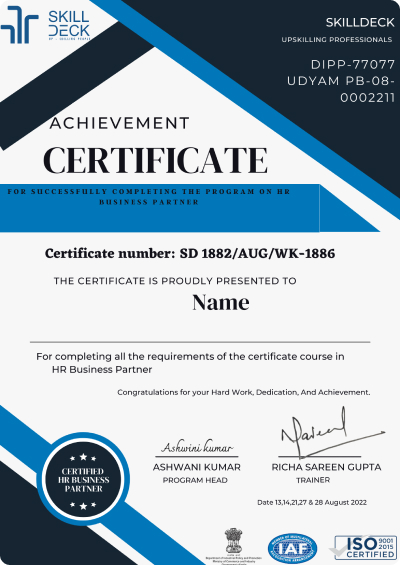
Fee & Batch Details
Invest in your future with affordable degree fees and flexible batch options
Program Fee
6500 INR
Installment Plan
No installment plan available for this program
Batch Details
Application Closure : 11 Spots Left
Date for 1st Class: 17 May 2025
Course End Date: 21 May 2025 (Tenative)
Payment Partners
Seats On First Come- First Serve Basis.
Our Courses and Course Certificates are trusted by these industry leaders


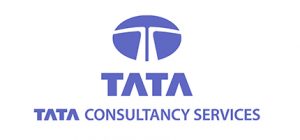
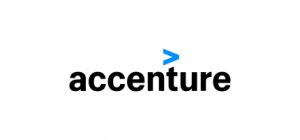
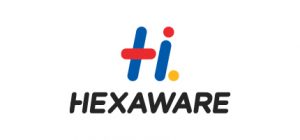
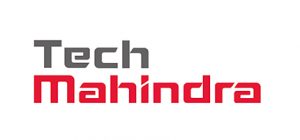
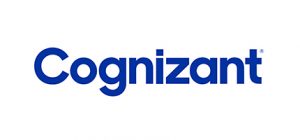

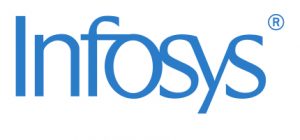
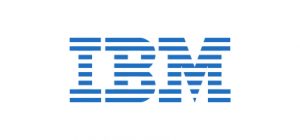
World’s #1 Upskilling & Reskilling Institute




Why SkillDeck?
Certified & Experienced Instructors

Placement Assistance

Tailor Made Training

Flexible Schedule

Access to the Recorded Sessions

10 in 1 Program

Masterclasses By Skill Deck®️

Live-Online Training

HR Essentials/Operations Course Training Certification Process
1
Counseling &
Registration
Consult one of the counselors to enroll in the right batch. Register yourself for the HR Essentials/Operations Course
2
Attend the Training in HR Essentials/Operations Course
Attend the Instructor-Led Sessions of the HR Essentials/Operations Course and get your Course Completion Certification. Go Through the Recorded Sessions, in case you missed any topic or training
3
Submission of Projects Assigned
4
Earn Certification
Post Completion of the training, get Course Completion Certification of HR Essentials/Operations Course from The SkillDeck®
FAQs
Curriculum is specifically engineered to meet the expectations of leading tech companies.
As the world of work evolves, so does the need for education related to labour law and workplace regulations in the HR domain. To that end, the SkillDeck
Labour Law Certificate Course offers an overview of the various employment-related legal topics. It provides theoretical and practical knowledge and shows participants how to apply these concepts in their careers. By dissecting court decisions and analyzing current trends in labour law, participants can gain a deep understanding of the subject matter.
- HR & Administration Personnel Office & Factory
- Managers/Supervisors Legal & Secretarial Personnel
- Payroll personnel Project managers & Supervisors Labour Law Practitioners
- Finance professionals Owners of SMEs & business Establishment Directors, Businessmen, traders & senior management personnel of private limited companies professional.
- Who deal or intend to deal with labour laws related matters Law, IT Professionals, CA, CS, Line Managers & Staff managers.
The pedagogy is highly interactive, comprising case studies, interactive sessions, quizzes, assessments, class participation, presentations, project work, and class exercises imparted by SkillDeck faculty to help participants gain the knowledge, understanding, and hands-on skills to immediately apply their learning in the workplace.
Program Fees: Fee is 6500 INR
Click here for certificate sample.
This is an online instructor led course where trainer will teach you over zoom
Yes skillDeck is a globally accredited firm with international accreditations and is also ISO, DIPP ,MSME registered under Indian laws so your certificate is globally accepted
Got more questions?
Talk to our counsellor
Contact us and our academic counsellor will get in touch with you shortly
























